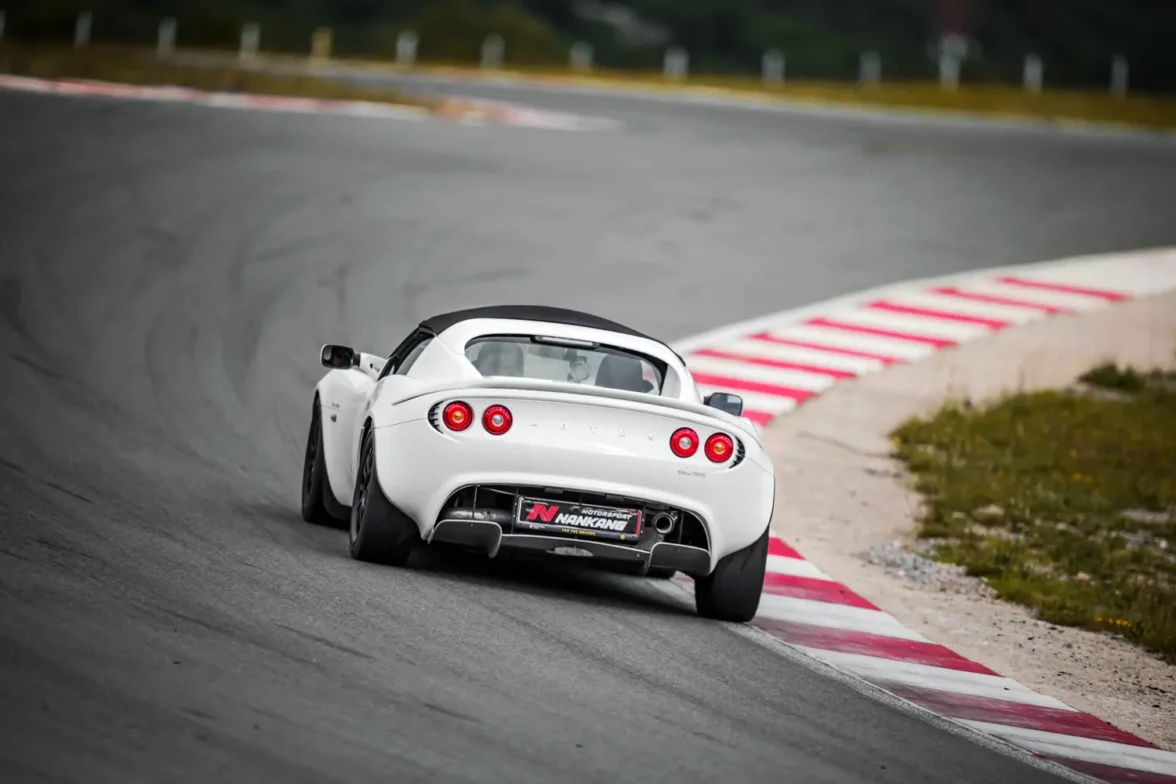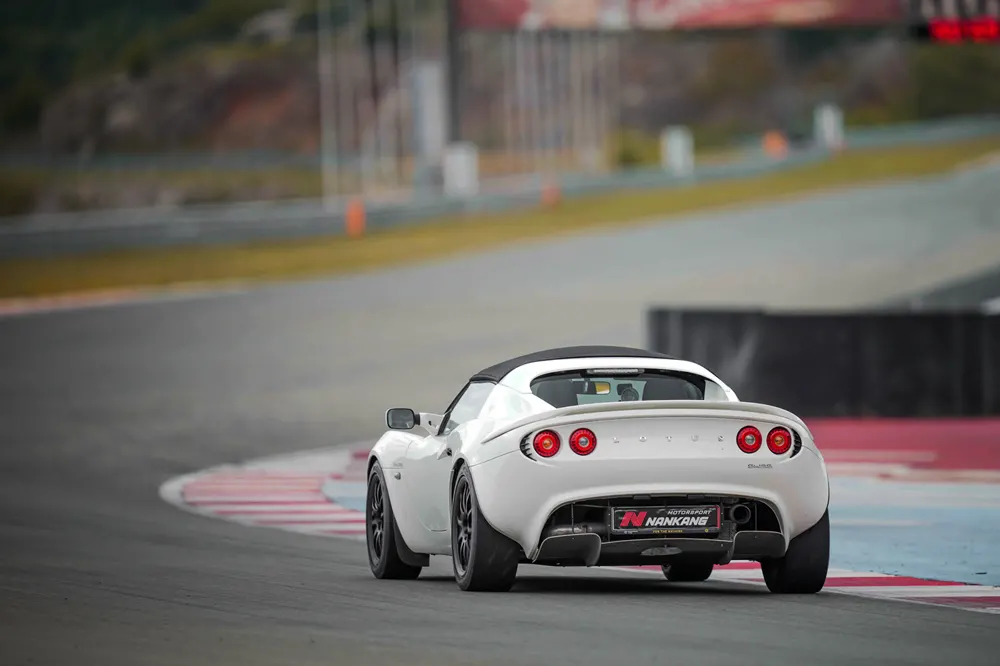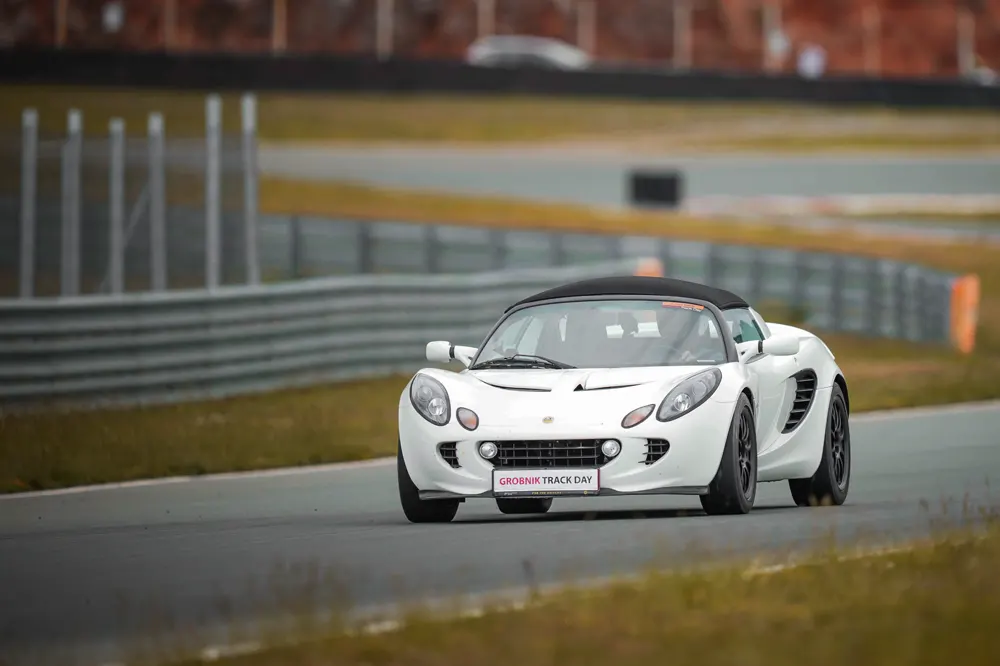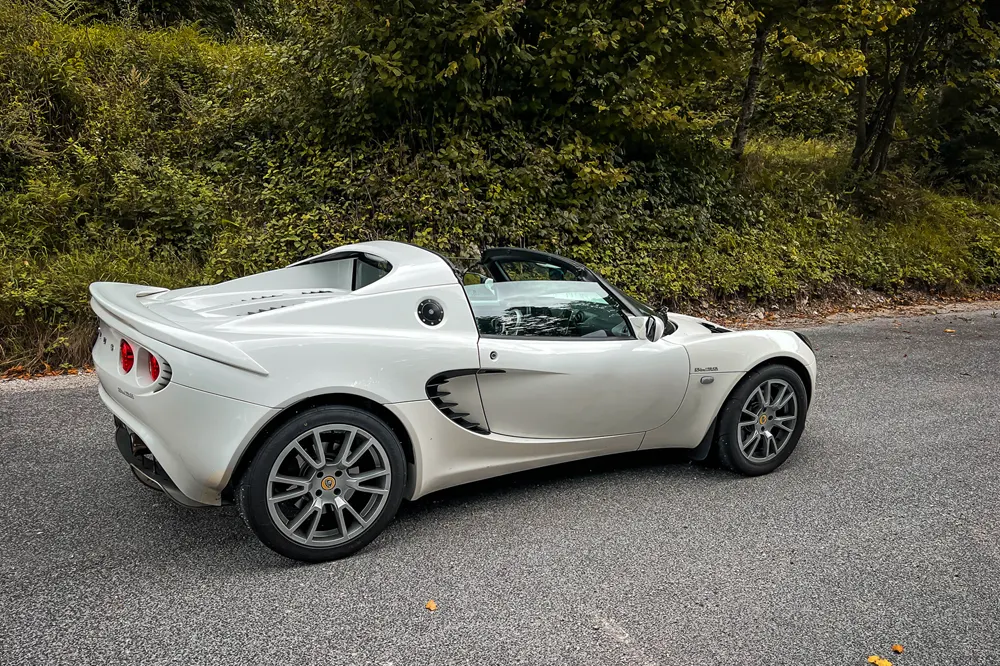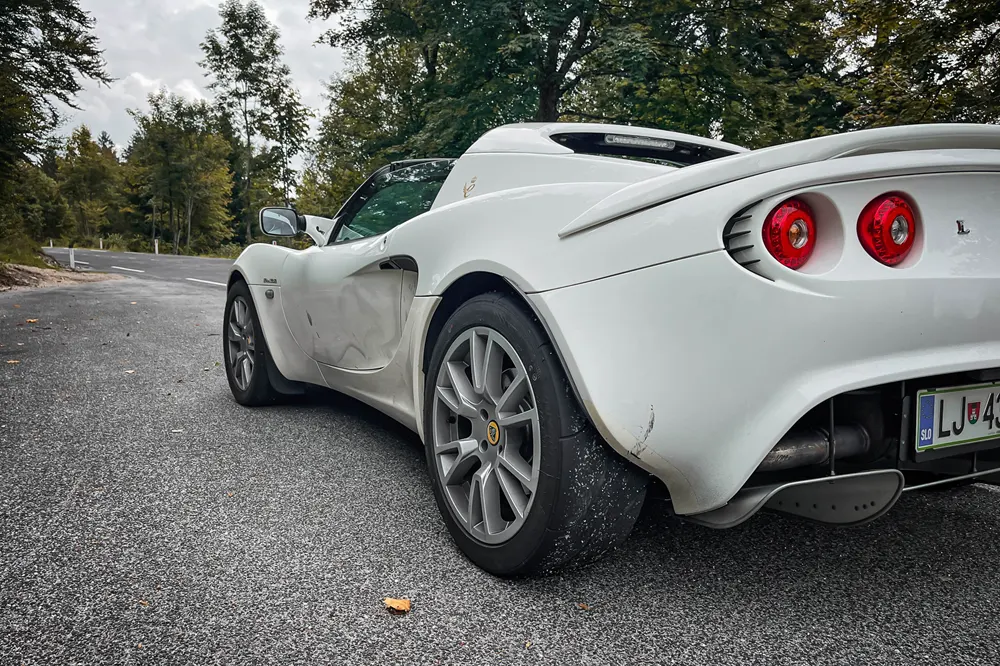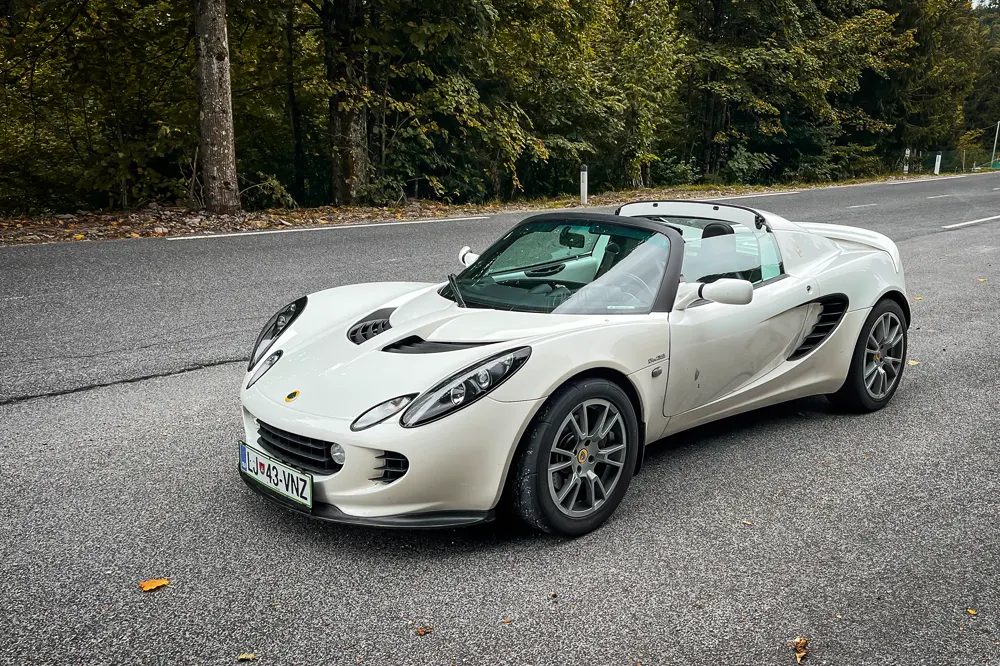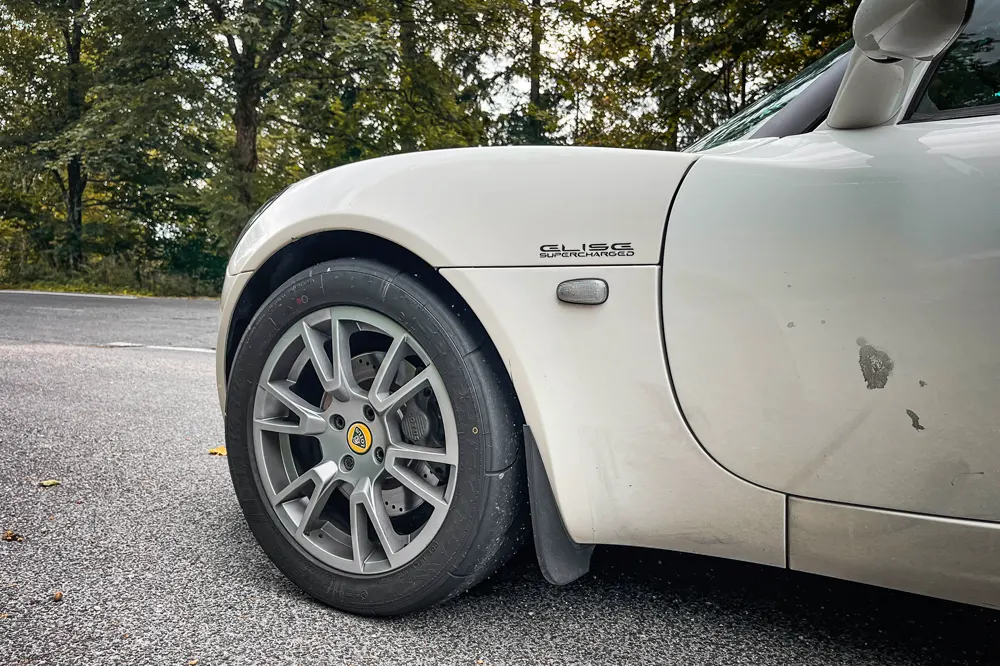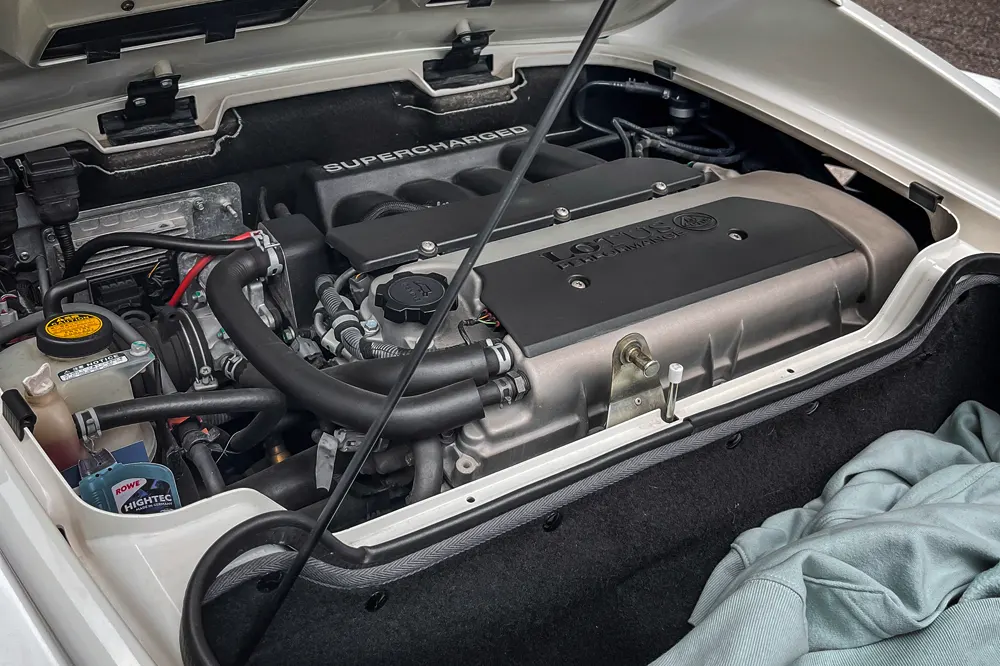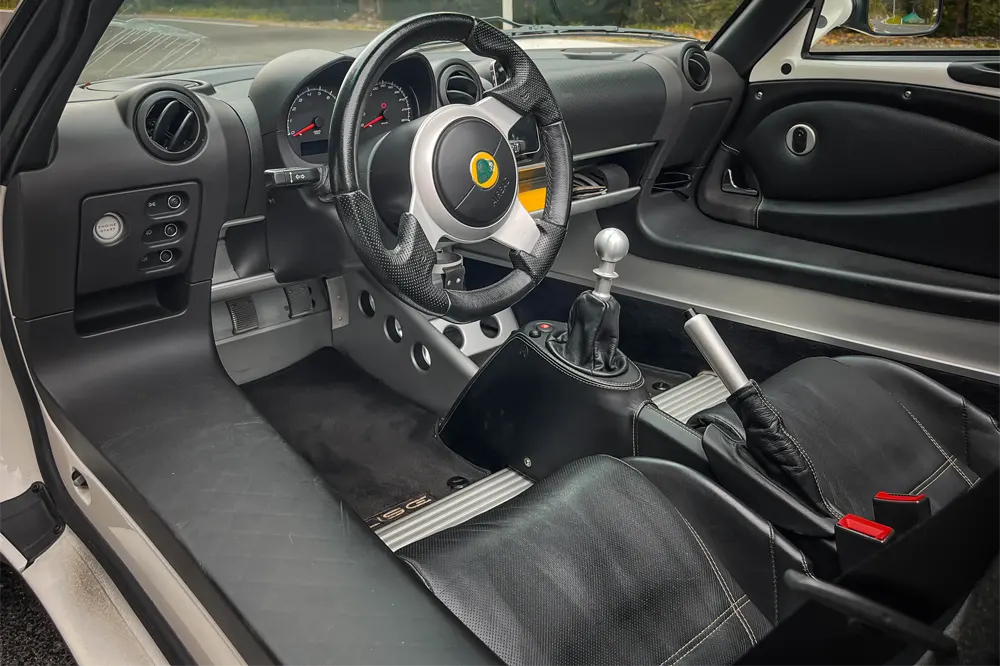Minimalism, muscle and a bruised spine
The Lotus had been on my »must-try« list for years. Everyone kept saying it was pure, authentic, minimalist. Right up my alley, then.
Form follows function. A low silhouette, sculpted lines stretched taut over a muscular chassis. It’s featherweight thanks to an aluminium monocoque, fiberglass panels and zero unnecessary extras. And if you thought Porsche’s bucket seats were tricky to climb into, try lowering yourself into an Elise. Grip the side rails, lower your body, and your spine will curse you on impact. Once you’re wedged in, you realise you’re sitting about as close to the tarmac as in a Honda CRX – only lower. The smarter move is to perch on the wide sill first, then shuffle yourself down into the seat like you’re sneaking into a fighter jet cockpit.
Ignition: Toyota style – steering: Lotus style
A quirky blend of key twist and starter button wakes the supercharged 1.8-litre four-cylinder borrowed from Toyota. The wheel is delightfully small, just the right thickness and oddly familiar. Toyota? Rover? Snick into first gear and launch onto a narrow, winding road. Cue shock number one: the steering wheel needs a proper squeeze. No power assistance, no progressive aid. Coming straight from a modern car, it’s a workout.
Did I feel every single pebble? Not quite. So maybe I’ll cut modern electric racks some slack in the future. The road surface wasn’t perfect, but the Elise actually soaked up bumps more gracefully than I expected.
Low silhouette. High commitment.
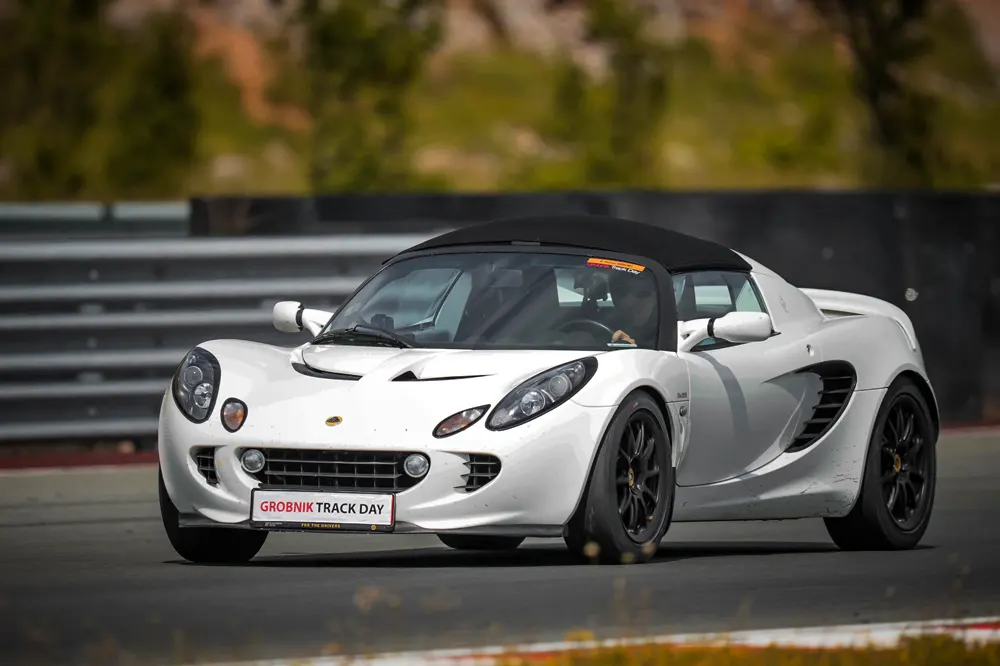
Every bump reported, every corner a dialogue
A few corners later, I got used to the heavy wheel, yet every so often the effort still caught me out. Downshift from third to second and it’s clear the gearbox prefers a bit of heel-and-toe while lacks a bit of precision. The engine pulls confidently all the way to 8,500 rpm, where the electronics politely cut the party short. No complaints about performance, but I did miss that manic rush near the redline: something many boosted four-cylinders share: better to upshift early than wait for fireworks that never quite arrive. On the other hand, how many engines spin this high at all?
Handling takes a moment to recalibrate. At 870 kg, the Elise weighs almost half of what most cars do, and with double wishbones front and rear, cornering authority comes baked-in. With its 60:40 weight split (mid-engine layout) it holds a neutral line with uncanny precision – until you overcook it and gentle understeer pushes the nose wide. You can brake later than expected, and like a 911, a firm stomp before turn-in shifts the weight perfectly. Ultimately, the handling is a joy all on its own.
So this is what »unfiltered« feedback really feels like.
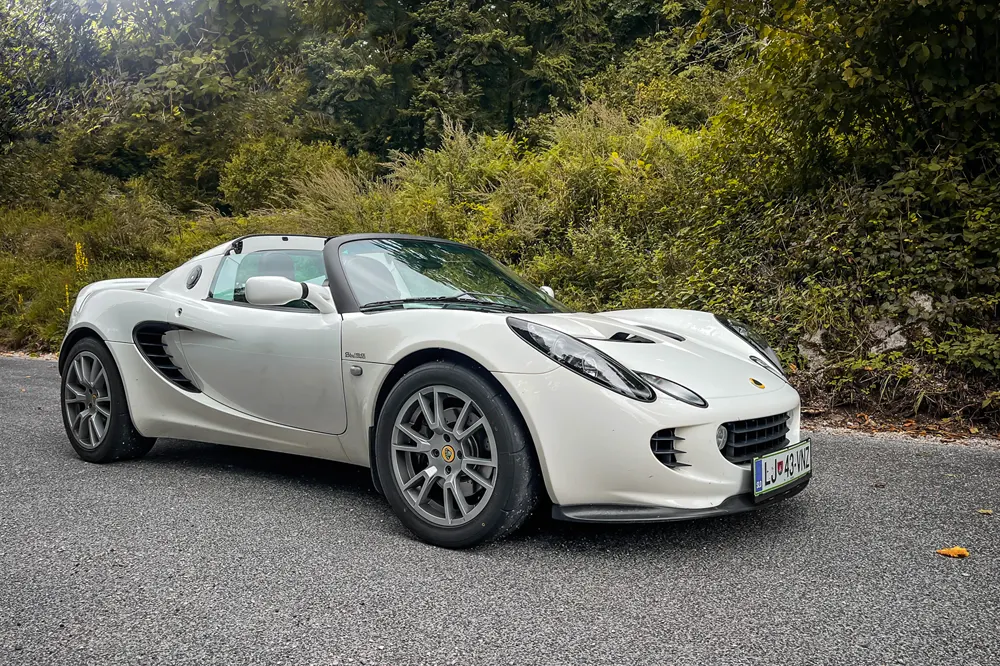
Storage? What storage?
My wife usually complains about storage in any car. Honestly, I didn’t even look, though the options list did include (one!) fabric cupholder. My phone went in the net behind the seats, I spotted a boot big enough for a weekend bag or two, if your life partner is very practical. And very forgiving.
For the brave and the honest
The Lotus Elise is unmistakably for the driver who values a raw mechanical experience and doesn’t mind a touch of Spartan hardship. It’s one of those cars that demands more effort from the driver – not because it lacks pace, but because it’s so disarmingly raw and special. And unlike most so-called sports cars, the Elise keeps things simple: a little engine, little wheels, little brakes and absolutely no electronic trickery – which also means it’s far less of a diva to run.
Half the weight. Twice the feel.
| 2008 Lotus Elise SC | Specs |
|---|---|
| Engine | Toyota 2ZR-GE, inline 4, 1796 cc, supercharged |
| Power | 220 PS @ 8000 rpm |
| Torque | 212 Nm @ 5000 rpm |
| Layout | Mid-engine, real wheel drive |
| Transmission | manual, 6 speed |
| Acceleration (0-100 km/h) | 4,6 seconds |
| Top Speed | 240 km/h |
| Tires | Front: 175/55 R16 | Rear: 225/45 R17 |
| Weight (unladen) | 870 kg |
| Dimensions (LxWxH) | 3785 x 1719 x 1117 mm |
| Wheelbase | 230 cm |

